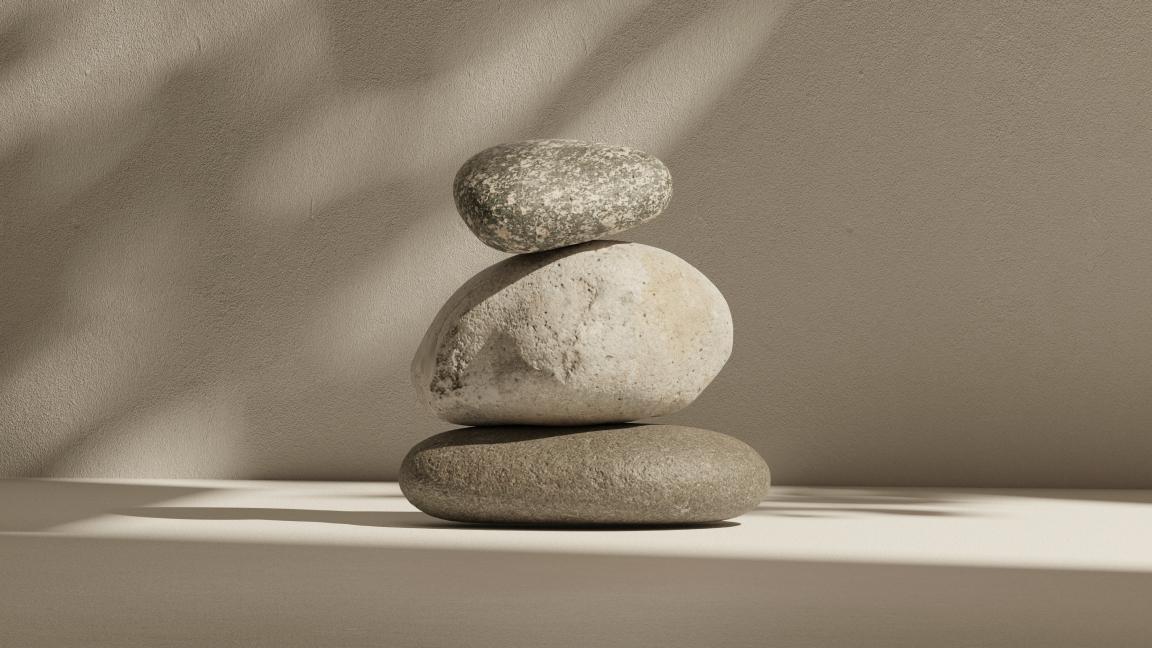
Ghosting and Avoidant Behaviour: Why We Pull Away and 3 Ways to Heal from It
Have you ever experienced ghosting? The two of you were chatting happily the night before, and the next day the person suddenly disappears, never replying again?
In an era obsessed with perfection—flawless skin, curated feeds, and ideal lifestyles—the ancient Japanese philosophy of wabi sabi offers a refreshing counterpoint. Rooted in Zen Buddhism, wabi sabi celebrates transience, simplicity, and the imperfect. Rather than seeking flawlessness, it encourages acceptance of life’s natural cycles and the beauty in impermanence. From a psychological perspective, this worldview fosters well-being, resilience, and a more grounded sense of self. This article explores the concept of wabi sabi, its psychological relevance, and how embracing the imperfect can improve mental health and life satisfaction.

In an era obsessed with perfection—flawless skin, curated feeds, and ideal lifestyles—the ancient Japanese philosophy of wabi sabi offers a refreshing counterpoint. Rooted in Zen Buddhism, wabi sabi celebrates transience, simplicity, and the imperfect. Rather than seeking flawlessness, it encourages acceptance of life’s natural cycles and the beauty in impermanence. From a psychological perspective, this worldview fosters well-being, resilience, and a more grounded sense of self. This article explores the concept of wabi sabi, its psychological relevance, and how embracing the imperfect can improve mental health and life satisfaction.
Wabi sabi is notoriously difficult to define in Western terms. “Wabi” originally referred to the loneliness of living in nature, but over centuries evolved into a celebration of rustic simplicity. “Sabi” denotes the beauty of aging and weathering—of things that have been marked by time (Juniper, 2003). Together, they form a worldview that finds charm in cracked pottery, faded fabrics, and fleeting moments.
Unlike Western ideals of symmetrical, polished beauty, wabi sabi values the imperfect, the incomplete, and the impermanent. These aesthetic principles are not only reflected in Japanese art and design but also in daily life and relationships. According to Koren (1994), wabi sabi is “a beauty of things imperfect, impermanent, and incomplete… a beauty of things modest and humble.”
From a psychological standpoint, the wabi sabi mindset aligns with numerous positive mental health outcomes. Modern psychology increasingly recognises the importance of accepting imperfection as a component of psychological flexibility—an attribute linked with emotional resilience and reduced anxiety (Kashdan & Rottenberg, 2010).
Embracing the imperfect helps individuals step away from the perfectionism trap. Perfectionism, while sometimes socially rewarded, is often associated with anxiety, depression, and low self-worth (Flett & Hewitt, 2002). By contrast, adopting a wabi sabi approach nurtures self-compassion—a critical factor in emotional well-being. As Neff (2003) highlights, self-compassion involves recognising one’s flaws without harsh judgement, much like appreciating a weathered bowl for its character rather than condemning its cracks.
Mindfulness, a well-established psychological practice, shares much in common with wabi sabi. Both encourage presence in the moment, non-judgemental awareness, and an acceptance of change. In fact, mindfulness is deeply rooted in Buddhist traditions, from which wabi sabi also stems.
Studies have shown that mindfulness reduces stress and enhances cognitive flexibility (Baer, 2003). Similarly, by observing the world through a wabi sabi lens—appreciating the patina on an old door or the fragility of a falling leaf—one cultivates awareness of the present and lets go of the need to control outcomes.
This alignment suggests that adopting wabi sabi aesthetics and practices can serve as a practical extension of mindfulness, embedding it into the visual and tactile dimensions of daily life.
Resilience—the ability to bounce back from adversity, is closely tied to how individuals perceive and respond to difficulties. Wabi sabi promotes the acceptance of loss, change, and the passage of time, all of which are inevitable parts of the human experience.
In psychological terms, this aligns with existential acceptance and the recognition of life’s impermanence. Research in existential psychology suggests that acknowledging death and transience can paradoxically lead to greater life appreciation and authenticity (Yalom, 1980).
Moreover, the wabi sabi perspective can soften the blow of personal failure or disappointment. Rather than internalising failure as a character flaw, individuals who embrace the imperfect are more likely to see setbacks as part of a larger, beautifully flawed journey.
Gratitude—the practice of noticing and appreciating the positives in life, has been shown to boost happiness, improve relationships, and enhance overall life satisfaction (Emmons & McCullough, 2003). The wabi sabi worldview invites us to notice and value subtle beauty: a chipped cup, a faded photograph, or the quiet hush of an early morning.
By shifting focus from what is missing or flawed to what is meaningful and real, wabi sabi nurtures a deeper sense of contentment. It trains the eye—and the mind—to appreciate what is, rather than lament what could be.
In a consumer culture that thrives on dissatisfaction, this shift in perspective can be profoundly liberating.
Incorporating wabi sabi into everyday life doesn’t require a Japanese tea ceremony or a Zen retreat. It starts with small acts of noticing and accepting:
These practices help foster a daily rhythm that honours presence, humility, and transience.
A global movement toward authenticity, mental wellness, and minimalism suggests that the values of wabi sabi are increasingly resonant. From design trends favouring organic materials and asymmetry to the popularity of movements like “slow living,” the world appears to be embracing the imperfect more openly.
In a psychological sense, this cultural shift reflects a collective desire to let go of the anxiety that perfectionism breeds. It’s an invitation to be more authentic, grounded, and connected—to ourselves and the world around us.
Wabi sabi teaches us that there is quiet strength in accepting things as they are. Its celebration of the imperfect—in people, objects, and experiences—can counter the harmful narratives of perfection that modern society perpetuates. Psychologically, it offers tools for cultivating mindfulness, resilience, self-compassion, and gratitude. In embracing wabi sabi, we do not lower our standards; we redefine beauty and success in more humane, sustainable terms.
Ultimately, the cracked bowl, the fading leaf, and even our insecurities are not signs of deficiency— but of a life lived deeply and honestly. And that, in its own quiet way, is profoundly beautiful.
Discover stillness, presence, and the quiet strength of wabi sabi with MindForest—your gentle guide to self-acceptance and emotional balance.

Let go of perfection. The ForestMind coach offers compassionate, psychology-backed support to help you accept change, build resilience, and find beauty in life’s natural flaws.
Embrace reflection without judgement. The Insight Journal helps you notice the imperfect moments, track emotional cycles, and grow through gentle self-awareness.
Understand your evolving self. Our tools offer insights into your unique strengths and vulnerabilities—inviting growth through honesty, not idealism.
Download MindForest today and begin your journey toward peaceful, imperfect living—with intention and grace.
References
Baer, R. A. (2003). Mindfulness training as a clinical intervention: A conceptual and empirical review. Clinical Psychology: Science and Practice, 10(2), 125–143. https://doi.org/10.1093/clipsy.bpg015
Emmons, R. A., & McCullough, M. E. (2003). Counting blessings versus burdens: An experimental investigation of gratitude and subjective well-being in daily life. Journal of Personality and Social Psychology, 84(2), 377–389. https://doi.org/10.1037/0022-3514.84.2.377
Flett, G. L., & Hewitt, P. L. (2002). Perfectionism and maladjustment: An overview of theoretical, definitional, and treatment issues. In G. L. Flett & P. L. Hewitt (Eds.), Perfectionism: Theory, research, and treatment (pp. 5–31). American Psychological Association.
Juniper, A. (2003). Wabi Sabi: The Japanese art of impermanence. Tuttle Publishing.
Kashdan, T. B., & Rottenberg, J. (2010). Psychological flexibility as a fundamental aspect of health. Clinical Psychology Review, 30(7), 865–878. https://doi.org/10.1016/j.cpr.2010.03.001
Koren, L. (1994). Wabi-Sabi for artists, designers, poets & philosophers. Stone Bridge Press.
Neff, K. D. (2003). The development and validation of a scale to measure self-compassion. Self and Identity, 2(3), 223–250. https://doi.org/10.1080/15298860309027
Yalom, I. D. (1980). Existential psychotherapy. Basic Books.
Discover practical psychology tips you can apply to your everyday life. From building resilience to improving relationships and finding work-life balance, our blog brings expert-backed insights that help you grow.

Have you ever experienced ghosting? The two of you were chatting happily the night before, and the next day the person suddenly disappears, never replying again?

This article breaks down the psychology of nonchalance, signs of a nonchalant dater, the debate nonchalant vs chalant, and what truly matters when forming modern relationships.

Have you ever felt so intensely drawn to someone that you couldn’t stop thinking about them—imagining every possible interaction, decoding every message, overanalysing every glance? If so, you may not be experiencing love, but something more specific: limerence.
Download MindForest and turn these insights into action. Get personalized support from ForestMind AI Coach, track your progress, and unlock your full potential.